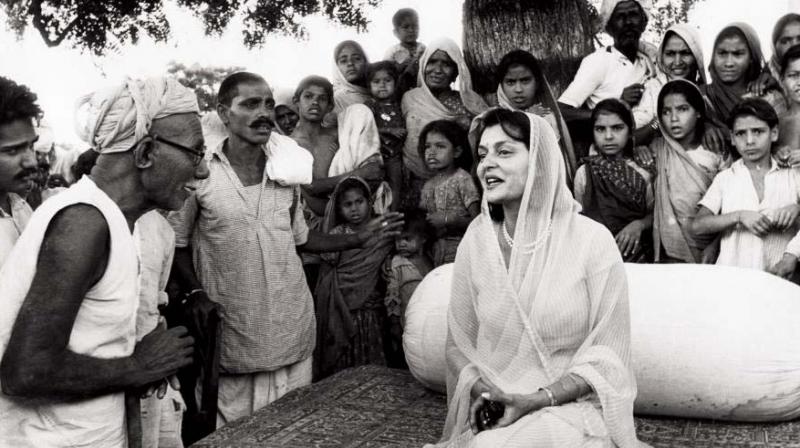India reborn, through the eyes of T S Satyan

“You must not look at things casually. Your eyes must be like a microscope. Look carefully… Your eyes must conduct a dialogue with the world. There is beauty all around. And the great motivation is to design and discover this beauty, to communicate this beauty… Great pictures are not taken, they are made.” These words, by photojournalist T.S. Satyan, are perhaps the most accurate description of the man who stood behind the lens. T.S. Satyan watched history being made, in some cases, helped compose the story but his greatness, undoubtedly, lay in his empathy. Satyan had the most unusual talent of looking into a human being’s eyes and seeing the soul within, bringing art and meaning to everyday life and the people who make it complete. Now, Bengaluru has found itself in a place of privilege, for Satyan’s family has released his vast archive to the city’s Museum of Art and Photography. An initiative of the Tasveer Foundation, MAP will be home to a permanent Satyan archive and also be a part of efforts to create a digital archive.
The bloody assassination of Sheikh Mujibur Rahman, former President of Bangladesh, remains one of the most disturbing pockets of South Asian history. Things got even worse, for the leading conspirators were given high ranks in the Bangladeshi administration. Civil unrest had not ended and in 1975, they were toppled in one more coup, led this time by Brigadier General Khaled Mosharraf. This tragedy has been immortalised by the legendary photojournalist, Tamabarahalli Subramanya Satyanaranaya Iyer, or as he is best known, T.S. Satyan. Satyan was a teenager when he found his first camera - and he was hooked. Whether or not he knew, at that time, that he was in pursuit of a life filled with hardship, it was a lesson he had learned well by the end. His autobiography, Alive and Clicking, contains within it a few words of advice for budding photographers: “Consider it carefully. You have to know more and work harder to earn less than in many other professions.” His words of caution notwithstanding, T.S. Satyan, along with photographers like Raghu Rai and even Homai Vyarawalla, brought art to Indian journalistm.
Satyan was born in Mysuru in 1923 and graduated with a degree in arts from Maharaja’s college. He had, howeve, procured his first camera by the time he finished his SSLC exams, at the princely cost of Rs 6. Later, his English professor lent him money for his first reflex camera, his only condition being that Satyan develop a book on Karnataka. He worked at HAL, did a brief stint in radio and made his living as freelance journalist, working with publications like Life, Time, Newsweek and Illustrated Weekly. In the 1960s, he began working as a photographer for the World Health Organisation, wher ehe remained for two years. During his time there, Satyan produced several reports on health wordk in the country, including a smallpox eradication campaign organised by WHO. That, along with other well-known projects like the efforts to eradicate blindness in North India, which he shot in Sitapur Eye Hospital in 1961, found their way into the World Health magazine.
In Love with Life, an aptly titled coffee table book, was launched in 2002. As the publisher’s note describes, it “is a book about everyday people, some of whom live in comfort, most of whom struggle to survive, all of whom leap out of the printed page to touch the viewer with their stories.” Few major happenings in the news world took place without the presence of T.S. Satyan and his trusty camera. A look at his life time, at a career that spanned six decades, will give audiences an intimate look at history being made, of the triumphs and tragedies that make our country whole.

